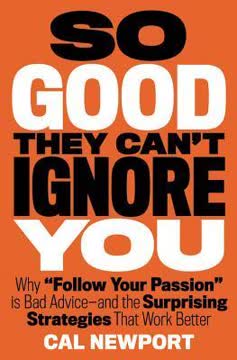重点摘要
1. 慢生产力:有意义工作的新哲学
慢生产力坚决拒绝不懈紧迫性的表演性奖励。
定义慢生产力。 慢生产力是一种强调做更少事情、以自然节奏工作并专注于质量的哲学。它旨在创造一种更可持续和有意义的知识工作方法,以对抗普遍存在的持续忙碌和过载文化。
历史背景。 这一概念汲取了传统知识工作者如科学家和艺术家的灵感,他们通常以较慢且多样化的节奏工作。例子包括:
- 艾萨克·牛顿花费20年时间发展《自然哲学的数学原理》的思想
- 乔治亚·欧姬芙在乔治湖度过的富有成效的夏天
- 约翰·麦克菲对长篇新闻的细致方法
慢生产力的好处:
- 减少倦怠和压力
- 增加创造力和创新
- 更高质量的输出
- 更可持续的长期职业生涯
2. 知识工作中伪生产力的兴衰
在知识工作中,当你同意一个新的承诺,无论是小任务还是大项目,它都会带来一定的持续行政负担。
伪生产力的起源。 随着20世纪中期知识工作的兴起,管理者们难以衡量生产力。这导致了将可见的活动作为有用性的替代,创造了一种持续忙碌的文化。
行政负担问题。 每个新任务或项目都会增加行政负担,如电子邮件和会议。随着工作量的增加,这种负担可能达到一个临界点,消耗掉大部分工作日,留下很少时间用于有意义的工作。
技术的角色。 网络计算机和通信工具如电子邮件和Slack的引入放大了这个问题,使得人们可以持续“忙碌”而不一定高效。
3. 做更少的事:专注于真正重要的事情
质量要求你放慢速度。
专注的力量。 专注于更少、更重要的任务可以实现更深的参与和更高质量的输出。这种方法的典范包括:
- 安德鲁·怀尔斯致力于解决费马大定理
- 简·奥斯汀在乔顿小屋的高产期
做更少事情的策略:
- 限制任务:专注于2-3个主要职业目标
- 限制项目:使用时间块管理工作量
- 限制每日目标:每天只做一个主要项目
- 使用反向任务清单:让他人将任务添加到你的公开清单中
好处:
- 减少压力和不知所措
- 增加专注和生产力
- 更高质量的工作
4. 以自然节奏工作:拥抱季节性和变化
总会有更多的工作要做。你应该给你的努力留出呼吸的空间和应有的尊重,使它们成为美好生活的一部分,而不是障碍。
工作的自然节奏。 纵观历史,工作有自然的起伏,通常与季节相关。现代知识工作失去了这种变化,导致倦怠和创造力下降。
自然节奏的策略:
- 在重要项目上花更长时间
- 在工作年中实施“慢季”
- 使用仪式来创造心理转变
- 在一天和一周内调整工作强度
季节性的好处:
- 提高创造力和解决问题的能力
- 减少倦怠和压力
- 更可持续的长期生产力
5. 痴迷于质量:相信自己和自己的能力
痴迷于你所生产的质量,即使这意味着短期内错失机会。利用这些结果的价值,长期内获得更多的自由。
质量作为杠杆。 专注于生产高质量的工作可以带来职业上的更大自主权和自由。例子包括:
- 珠儿拒绝百万美元签约奖金以发展她的技艺
- 保罗·贾维斯利用他的技能创造灵活、低压力的生活方式
提高质量的策略:
- 成为你领域的“影迷”:研究相关学科的大师
- 开始你自己的“英克林”:组建一个互相批评和改进的小组
- 投资于高质量的工具和环境
好处:
- 增加职业机会
- 更大的工作自主权和控制权
- 更有意义和满足感的职业生活
6. 驯服小任务:控制分散注意力的任务的策略
控制任务不是为了逃避小事,而是为了使这些努力尽可能无痛。
小任务的问题。 小的义务会积累并压倒,扰乱对重要工作的专注。
控制小任务的策略:
- 将任务自动化:为经常性任务创建定期时间表
- 同步:使用办公时间和清理会议
- 让他人多做工作:实施反向任务清单
- 避免任务引擎:选择产生较少小任务的项目
- 花钱:投资于工具和服务以减少行政工作
好处:
- 为重要工作节省更多时间和精力
- 减少压力和不知所措
- 提高整体生产力
7. 创造诗意的工作环境以提升创造力
奇特是强大的,即使它是丑陋的。
环境的力量。 工作的物理和心理环境可以显著影响创造力和生产力。
创造激发灵感的工作空间的策略:
- 使你的空间与工作匹配:使环境与你的目标一致
- 拥抱奇特:非传统的空间可以激发创造力
- 使用引人注目的仪式:创造仪式来转变你的心理状态
例子:
- 彼得·本奇利在炉子修理店写《大白鲨》
- 玛雅·安杰卢租用酒店房间写作
- 乔治亚·欧姬芙在乔治湖度过的富有成效的夏天
8. 利用质量获得自由和自主权
痴迷于质量就是成为1967年的披头士,走进EMI录音室,无限期地实验你的西塔琴和多轨录音机。
质量作为职业资本。 发展稀有且有价值的技能提供了谈判更好工作条件和更多自主权的杠杆。
例子:
- 披头士在《佩珀中士的孤独之心俱乐部乐队》中的自由实验
- 保罗·贾维斯利用他的网页设计技能创造灵活的生活方式
- 艾拉妮丝·莫莉塞特的艺术冒险导致《小碎片》
利用质量的策略:
- 相信自己:采取经过计算的风险展示你的能力
- 降低薪水:用即时收入换取长期技能发展
- 公布时间表:利用社会压力激励高质量工作
9. 在痴迷与完美主义之间取得平衡以获得最佳结果
进步才是重要的,而不是完美。
完美主义陷阱。 虽然痴迷于质量至关重要,但重要的是避免陷入无休止的修订中。
平衡痴迷和完美主义的策略:
- 设定时间限制:给自己足够的时间生产高质量的工作,但不是无限的时间
- 专注于进步:旨在推进领域或对话,而不是创造单一的杰作
- 使用反馈循环:定期分享工作以获得反馈并保持动力
例子:
- 披头士在《佩珀中士》中平衡实验和截止日期
- 林-曼努尔·米兰达对《在高地》的迭代开发
好处:
- 持续输出高质量工作
- 避免创意瘫痪
- 在长期项目中保持动力
最后更新日期:
FAQ
What's Slow Productivity about?
- Sustainable Work Focus: Slow Productivity by Cal Newport emphasizes a sustainable approach to work, advocating for balance between productivity and well-being.
- Critique of Busyness: The book critiques the modern culture of busyness and pseudo-productivity, which prioritizes visible activity over meaningful work.
- Core Principles: Newport introduces three principles: do fewer things, work at a natural pace, and obsess over quality, aiming to reshape professional life.
- Practical Strategies: It offers actionable advice to help knowledge workers escape the cycle of pseudo-productivity and find fulfillment.
Why should I read Slow Productivity by Cal Newport?
- Addressing Burnout: If you're overwhelmed by work demands, this book offers a refreshing perspective on achieving results without sacrificing well-being.
- Enhance Work Quality: It encourages focusing on the quality of work rather than quantity, leading to more meaningful outcomes and professional satisfaction.
- Cultural Shift: Newport promotes a cultural shift in defining productivity, advocating for a humane and thoughtful approach to work.
- Applicable Across Fields: The strategies are relevant for various professional settings, from freelancers to corporate employees.
What are the key takeaways of Slow Productivity by Cal Newport?
- Do Fewer Things: Focus on a limited number of important projects to enhance quality and reduce overwhelm, leading to more meaningful accomplishments.
- Work at a Natural Pace: Allow work to unfold at a sustainable speed, incorporating breaks and varied intensity levels to promote deeper engagement.
- Obsess Over Quality: Prioritize the quality of work over the quantity of tasks completed, encouraging a mindset shift towards impactful work.
- Practical Implementation: Newport provides strategies like scheduling slow seasons and simplifying daily schedules to maintain a natural work pace.
What is pseudo-productivity, as defined in Slow Productivity?
- Visible Activity Proxy: Pseudo-productivity is the use of visible activity as a proxy for actual productive effort, equating busyness with effectiveness.
- Negative Consequences: This mindset leads to burnout and a lack of meaningful output, trapping individuals in a cycle of constant activity.
- Cultural Critique: Newport critiques this approach, suggesting it undermines true productivity, which should focus on quality and meaningful contributions.
- Shift in Focus: The book encourages shifting focus from mere visibility to genuine accomplishment and well-being.
What are the three principles of slow productivity in Slow Productivity?
- Do Fewer Things: Reduce obligations to focus on what truly matters, allowing for deeper engagement and better results.
- Work at a Natural Pace: Adopt a work rhythm that varies in intensity, allowing for rest and reflection to enhance creativity and productivity.
- Obsess Over Quality: Emphasize producing high-quality work rather than simply completing tasks, fostering pride and accomplishment.
- Holistic Approach: These principles collectively aim to create a more sustainable and fulfilling work life.
How can I implement the principle of "do fewer things" from Slow Productivity?
- Limit Commitments: Reduce obligations to a manageable level, focusing on key projects that align with your goals to avoid overwhelm.
- Prioritize Important Tasks: Identify impactful tasks and dedicate time and energy to them, allowing for deeper focus and better outcomes.
- Use a Holding Tank: Maintain a list of potential projects to pull from when you have capacity, managing workload and staying organized.
- Strategic Focus: This approach helps streamline efforts and enhance the quality of work.
What does Newport mean by "work at a natural pace" in Slow Productivity?
- Avoiding Rush: Resist the urge to rush through tasks, allowing work to unfold at a sustainable and manageable pace.
- Embracing Variation: Incorporate periods of intense focus followed by breaks or lighter work, mirroring natural life rhythms.
- Long-Term Perspective: Appreciate the value of taking time to develop ideas and projects, leading to more meaningful outcomes.
- Balanced Approach: This principle promotes a healthier work-life balance and enhances creativity.
What is the definition of "quiet quitting" in Slow Productivity?
- Control Over Workload: Quiet quitting involves disengaging from hustle culture by doing only what is required, setting boundaries at work.
- Seasonal Approach: Newport suggests using quiet quitting as a tactic to implement seasonality in work, recharging during specific seasons.
- Psychological Benefits: Many report improvements in mental health and work-life balance by reducing the pressure to be constantly available.
- Reclaiming Time: This practice allows individuals to reclaim their time and energy for personal projects and well-being.
What are some practical strategies from Slow Productivity by Cal Newport?
- Schedule Slow Seasons: Plan specific times of the year to slow down work pace, focusing on low-impact tasks during off-seasons.
- Implement "No Meeting Mondays": Designate one day a week free from meetings to create uninterrupted time for important projects.
- Pair Work with Rest Projects: After major work projects, schedule time for leisure or personal projects to maintain motivation and prevent burnout.
- Balanced Work Life: These strategies help create a sustainable work environment that fosters creativity and reduces burnout.
What are the best quotes from Slow Productivity and what do they mean?
- "Your worth as a person is not defined by your labor.": Encourages seeking fulfillment beyond professional achievements, emphasizing personal value.
- "Hardwood grows slowly.": Reflects the idea that quality work takes time and patience, prioritizing depth and craftsmanship over speed.
- "If you collect modest drops of meaningful effort for 365 days, you’ll end the year with a bucket that’s pretty damn full.": Illustrates the cumulative effect of consistent, focused work, emphasizing small, intentional efforts leading to significant accomplishments.
- Core Messages: These quotes encapsulate the book's core messages about redefining productivity and valuing meaningful contributions.
How does Slow Productivity address the issue of burnout?
- Critique of Modern Work Culture: Newport identifies pseudo-productivity pressures as a primary driver of burnout, arguing constant visible activity is unsustainable.
- Promoting Sustainable Practices: Advocates for a slower, more intentional work approach, focusing on fewer tasks and allowing for natural pacing.
- Encouraging Reflection and Rest: Emphasizes the importance of breaks and varied work intensity to rejuvenate individuals and enhance productivity.
- Long-Term Solutions: The book suggests a fundamental shift in viewing productivity to create a healthier relationship with work.
How can I implement the principles of Slow Productivity in my daily life?
- Start Small: Begin by applying one or two principles, such as reducing projects or scheduling regular breaks, and gradually incorporate more strategies.
- Create a Supportive Environment: Align workspace and routines with slow productivity principles, like decluttering and setting work hour boundaries.
- Reflect and Adjust: Regularly assess progress and make adjustments, experimenting with different strategies to find what works best for you.
- Personalized Approach: Slow productivity is about finding a balance that suits your individual needs and work style.
评论
慢速生产力的评价褒贬不一。一些人赞扬纽波特对质量导向工作和自然节奏的见解,认为其发人深省且具有应用性。另一些人则批评这本书重复旧观点,缺乏连贯性,并且充满了过多的轶事。许多评论者指出,这些建议可能并不适用于所有工人,特别是那些自主性较低的工人。虽然有些人认为纽波特的原则有价值,但也有人觉得内容可以浓缩成更短的格式。总体而言,关于这本书的实用性和相关性的意见存在分歧。
Similar Books






















